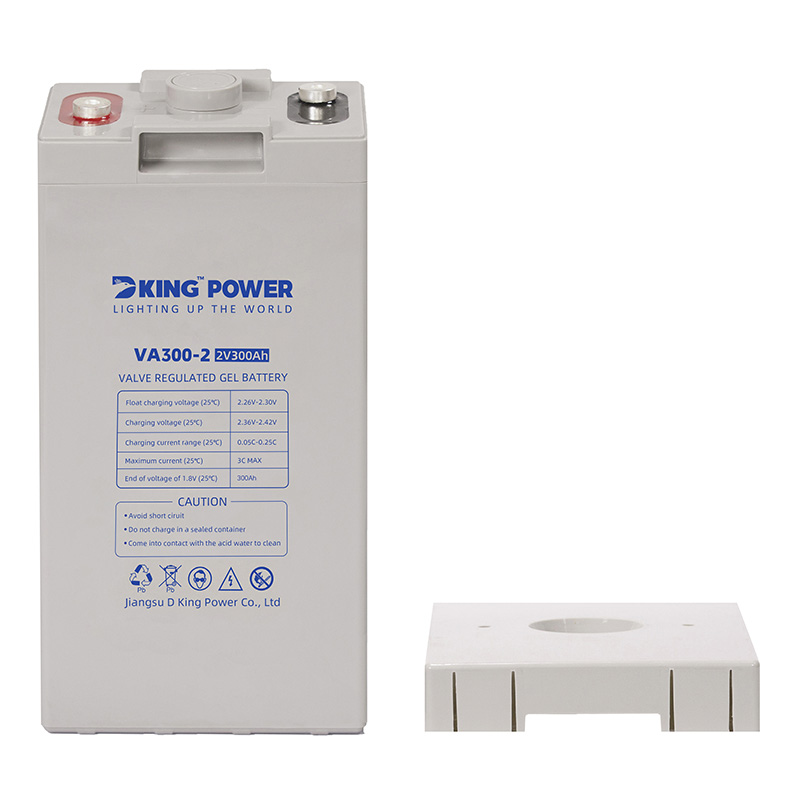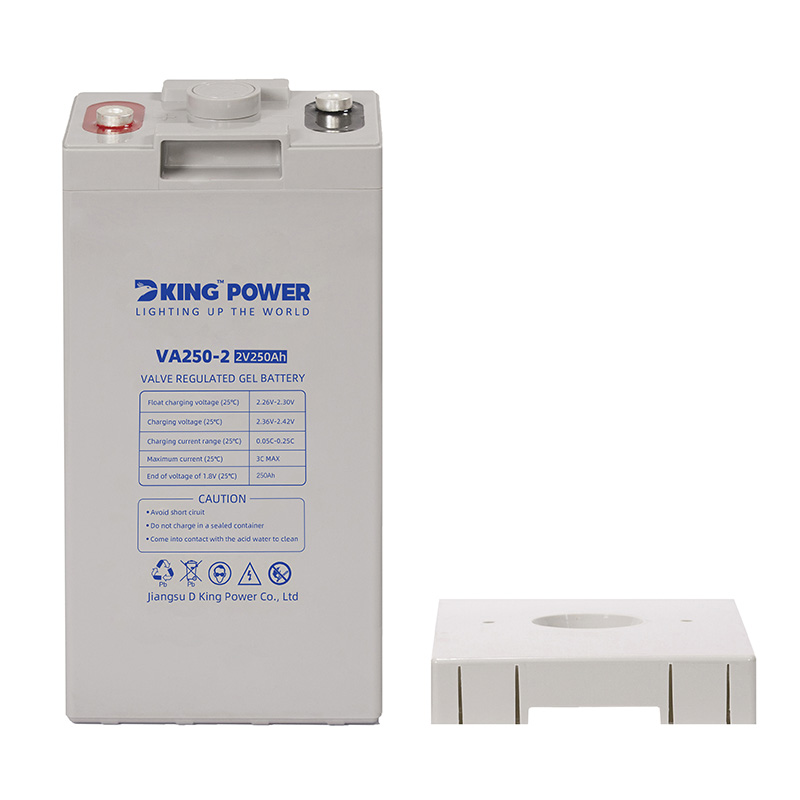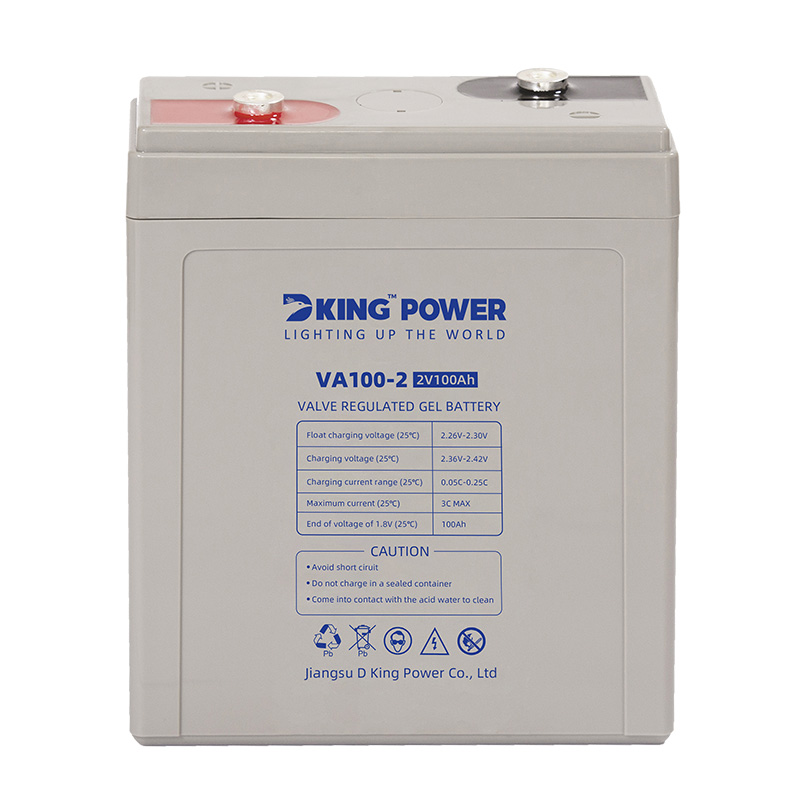DKGB2-300-2V300AH SEALED GEL LEAD ACID BATTERY
Technical Features
1. Charging efficiency: The usage of imported low resistance raw materials and advanced process help make theinternal resistance smaller and the acceptance ability of small current charging stronger.
2. High and low temperature tolerance: Wide temperature range (lead-acid:-25-50 C ,and gel:-35-60 C), suitablefor indoor and outdoor use in varies environments.
3. Long cycle-life: The design life of lead acid and gel series reach to more than 15 and 18 years respectively, forthe arid is corrosion- resistant. and electrolvte is without risk of stratification by using multiple rare-earth alloy ofindependent intellectual property rights, nanoscale fumed silica imported from Germany as base materials, andelectrolyte of nanometer colloid all by independent research and development.
4. Environment-friendly: Cadmium (Cd), which is poisonous and not easy to recycle, does not exist. Acid leakageof gel electrolvte will not happen. The battery operates in safety and environmental protection.
5. Recovery performance: The adoption of special alloys and lead paste formulations make a low self-dischargerate, good deep discharge tolerance, and strong recover capability.
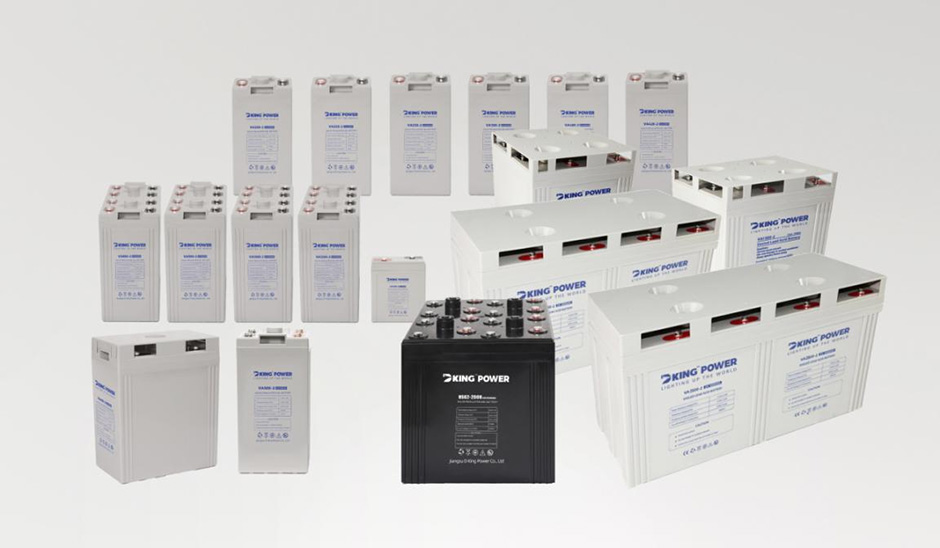
Parameter
|
Model |
Voltage |
Capacity |
Weight |
Size |
|
DKGB2-100 |
2v |
100Ah |
5.3kg |
171*71*205*205mm |
|
DKGB2-200 |
2v |
200Ah |
12.7kg |
171*110*325*364mm |
|
DKGB2-220 |
2v |
220Ah |
13.6kg |
171*110*325*364mm |
|
DKGB2-250 |
2v |
250Ah |
16.6kg |
170*150*355*366mm |
|
DKGB2-300 |
2v |
300Ah |
18.1kg |
170*150*355*366mm |
|
DKGB2-400 |
2v |
400Ah |
25.8kg |
210*171*353*363mm |
|
DKGB2-420 |
2v |
420Ah |
26.5kg |
210*171*353*363mm |
|
DKGB2-450 |
2v |
450Ah |
27.9kg |
241*172*354*365mm |
|
DKGB2-500 |
2v |
500Ah |
29.8kg |
241*172*354*365mm |
|
DKGB2-600 |
2v |
600Ah |
36.2kg |
301*175*355*365mm |
|
DKGB2-800 |
2v |
800Ah |
50.8kg |
410*175*354*365mm |
|
DKGB2-900 |
2v |
900AH |
55.6kg |
474*175*351*365mm |
|
DKGB2-1000 |
2v |
1000Ah |
59.4kg |
474*175*351*365mm |
|
DKGB2-1200 |
2v |
1200Ah |
59.5kg |
474*175*351*365mm |
|
DKGB2-1500 |
2v |
1500Ah |
96.8kg |
400*350*348*382mm |
|
DKGB2-1600 |
2v |
1600Ah |
101.6kg |
400*350*348*382mm |
|
DKGB2-2000 |
2v |
2000Ah |
120.8kg |
490*350*345*382mm |
|
DKGB2-2500 |
2v |
2500Ah |
147kg |
710*350*345*382mm |
|
DKGB2-3000 |
2v |
3000Ah |
185kg |
710*350*345*382mm |
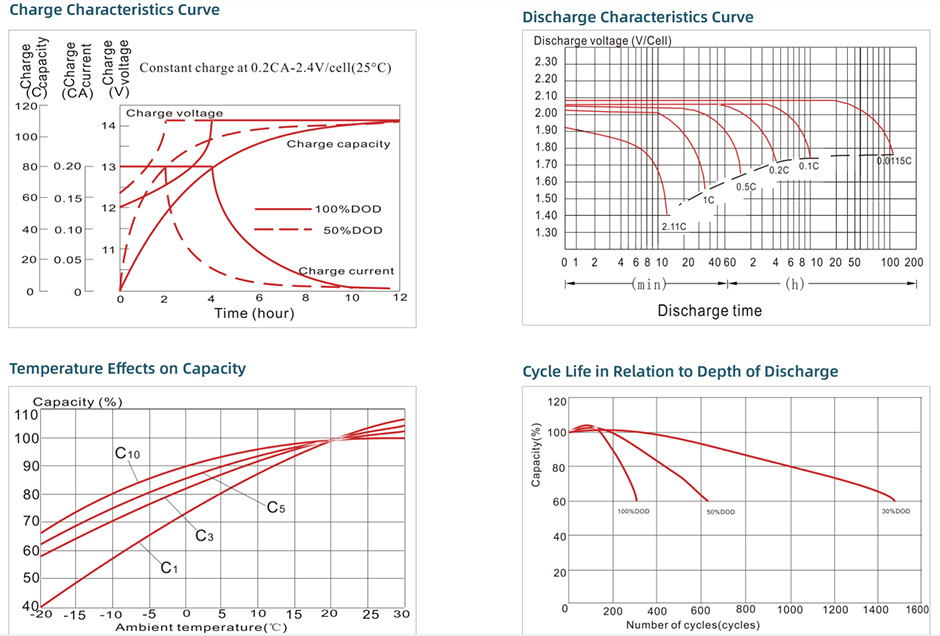
production process
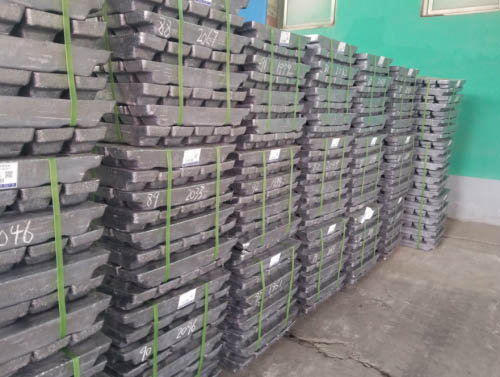
Lead ingot raw materials
Polar plate process
Electrode welding
Assemble process
Sealing process
Filling process
Charging process
Storage and shipping
Certifications
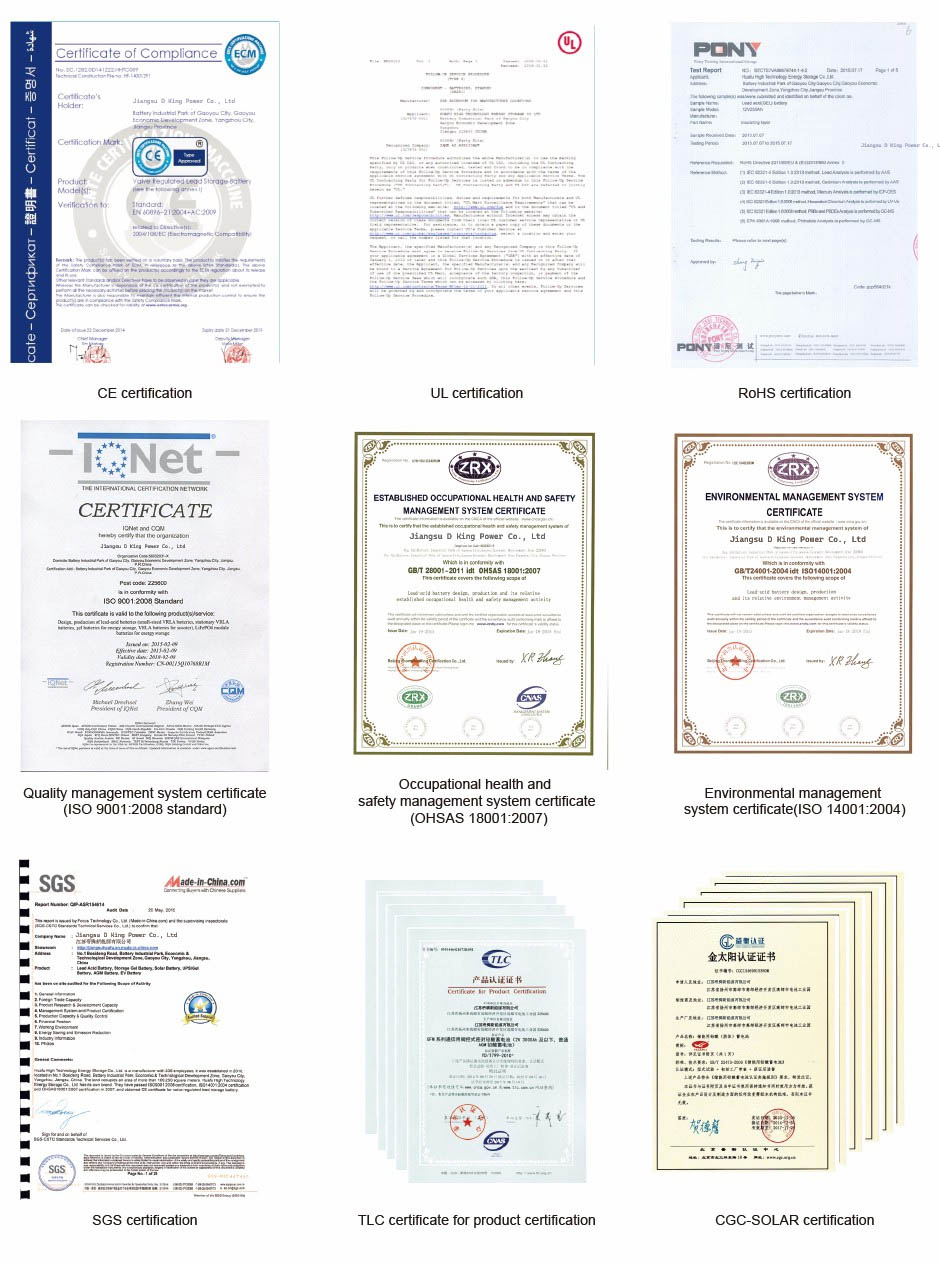
More for reading
Colloid battery belongs to a development category of lead-acid battery. The simplest way is to add gelling agent in sulfuric acid to change the sulfuric acid electrolyte into colloidal state. The battery with colloidal electrolyte is usually called colloidal battery.
In a broad sense, the difference between gel battery and conventional lead-acid battery is not only that the electrolyte is changed to gel. For example, the non condensable solid aqueous colloid belongs to the colloidal battery from the perspective of electrochemical classification structure and characteristics. Another example is to attach polymer materials to the grid, commonly known as ceramic grid, which can also be regarded as the application characteristics of gel battery.
Recently, some laboratories have added a targeted coupling agent to the electrode plate formula, which has greatly improved the reaction utilization rate of the active substances on the electrode plate. According to the non-public data, the specific energy by weight of 70wh/kg can be reached. These are examples of industrial practice and the application of colloidal cell to be industrialized at this stage. The difference between colloidal battery and conventional lead-acid battery has been further developed from the initial understanding of electrolyte gelling to the research of electrochemical characteristics of electrolyte infrastructure, as well as the application and promotion in grid and active materials.
Important advantages of gel battery: high quality, long cycle life. The colloidal electrolyte can form a solid protective layer around the electrode plate to protect the electrode plate from damage, fracture and corrosion due to vibration or collision. At the same time, it also reduces the bending of the electrode plate and the short circuit between the electrode plates when the battery is used under heavy load, so as not to cause the capacity decline. It has good physical and chemical protection purposes, and is twice the life of ordinary lead-acid batteries.
Colloid battery belongs to a development category of lead-acid battery. The simplest way is to add gelling agent in sulfuric acid to change the sulfuric acid electrolyte into colloidal state. The battery with colloidal electrolyte is usually called colloidal battery.
In a broad sense, the difference between gel battery and conventional lead-acid battery is not only that the electrolyte is changed to gel. For example, the non condensable solid aqueous colloid belongs to the colloidal battery from the perspective of electrochemical classification structure and characteristics. Another example is to attach polymer materials to the grid, commonly known as ceramic grid, which can also be regarded as the application characteristics of gel battery.
Recently, some laboratories have added a targeted coupling agent to the electrode plate formula, which has greatly improved the reaction utilization rate of the active substances on the electrode plate. According to the non-public data, the specific energy by weight of 70wh/kg can be reached. These are examples of industrial practice and the application of colloidal cell to be industrialized at this stage. The difference between colloidal battery and conventional lead-acid battery has been further developed from the initial understanding of electrolyte gelling to the research of electrochemical characteristics of electrolyte infrastructure, as well as the application and promotion in grid and active materials.
Important advantages of gel battery: high quality, long cycle life. The colloidal electrolyte can form a solid protective layer around the electrode plate to protect the electrode plate from damage, fracture and corrosion due to vibration or collision. At the same time, it also reduces the bending of the electrode plate and the short circuit between the electrode plates when the battery is used under heavy load, so as not to cause the capacity decline. It has good physical and chemical protection purposes, and is twice the life of ordinary lead-acid batteries.
Low temperature lithium iron phosphate battery 3.2V 20A
Low temperature lithium iron phosphate battery 3.2V 20A
-20 ℃ charging, - 40 ℃ 3C discharge capacity ≥ 70%
Charging temperature: - 20~45 ℃
-Discharge temperature: - 40~+55 ℃
-Maximum discharge rate supported at 40 ℃: 3C
-40 ℃ 3C discharge capacity retention rate ≥ 70%
Click Details
It is safe to use, beneficial to environmental protection, and belongs to the real sense of green power supply. The electrolyte of the gel battery is solid and sealed. The gel electrolyte never leaks, keeping the specific gravity of each part of the battery consistent. The special calcium lead tin alloy grid is used for better corrosion resistance and charging acceptance. Ultra high strength diaphragm is used to prevent short circuit. Imported high quality safety valve, precise valve control and pressure regulation. It is equipped with acid mist filtration explosion-proof device, which is more safe and reliable. During use, there is no acid mist gas released, no electrolyte overflow, no harmful elements to human body in the production process, non-toxic, pollution-free, which prevents a large amount of electrolyte overflow and infiltration during the use of traditional lead-acid batteries. The floating charge current is small, the battery has less heat, and the electrolyte does not have acid stratification.
Deep discharge cycle has good performance. Under the condition of timely recharge after deep discharge, the capacity of the battery can be 100% recharged, which can meet the requirements of high frequency and deep discharge. Therefore, its application scope is wider than that of lead-acid battery.
Small self discharge, good deep discharge performance, strong charge acceptance, small upper and lower potential difference, and large capacitance. It has significantly improved the low temperature starting ability, charge retention ability, electrolyte retention ability, cycle durability, vibration resistance, temperature resistance and other aspects. It can be put into operation without charging after being stored at 20 ℃ for 2 years.
Wide adaptability to environment (temperature). It can be used in the temperature range of - 40 ℃ - 65 ℃, especially with good low-temperature performance, and is suitable for northern alpine regions. It has good seismic performance and can be safely used in various harsh environments. It is not limited by space, and can be placed in any direction during use.
It is fast and convenient to use. Because the internal resistance, capacity and floating charge voltage of the single battery are consistent, there is no need for equalizing charge and regular maintenance.

